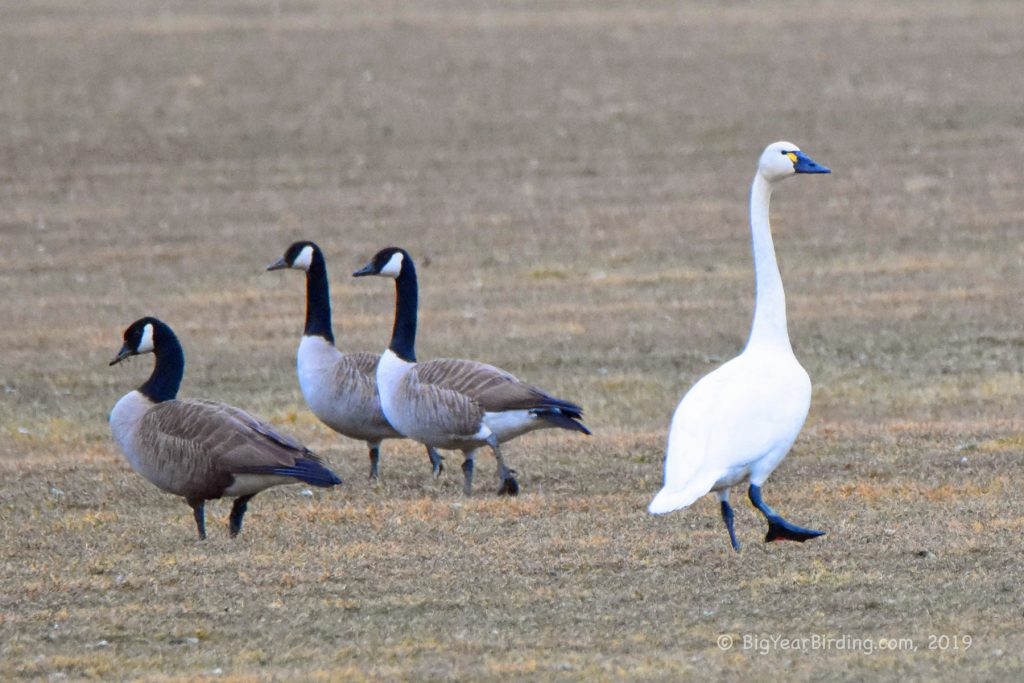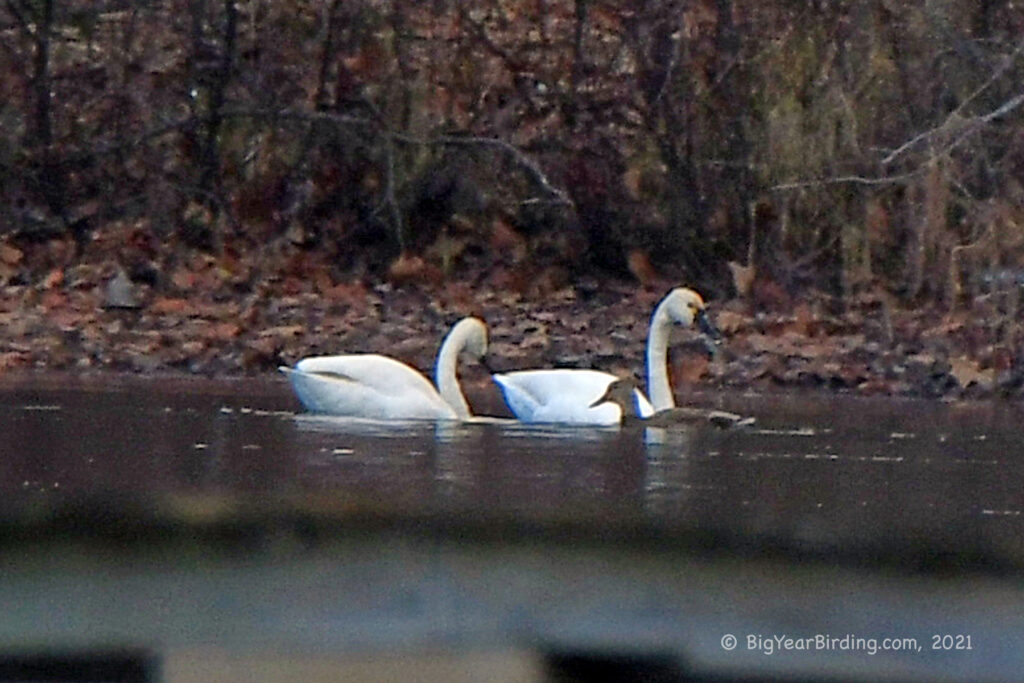
The Tundra Swan (Cygnus columbianus) is a large waterfowl species that breeds in the Arctic tundra and migrates south to coastal regions of the United States during winter. It is one of two swan species found in North America, and it is distinguished by its smaller size and different vocalizations compared to the larger Trumpeter Swan.

Adult Tundra Swans typically measure 4.5 to 5.5 feet (1.4 to 1.7 meters) in length and have a wingspan of 5 to 6.5 feet (1.5 to 2 meters). They weigh between 9 to 18 pounds (4 to 8 kilograms), with males being slightly larger and heavier than females. These swans have a long neck and a white plumage that can sometimes appear grayish due to mud staining.
The Tundra Swan can be distinguished from other swan species by its small, triangular bill with a yellow patch near the eye, and a distinctively sloping forehead. Additionally, during flight, the Tundra Swan displays black wingtips that contrast against its white body. The juveniles have a brownish-gray plumage and lack the yellow patch near the eye.
During the breeding season, Tundra Swans migrate to the Arctic tundra where they nest in wetlands and lakes. In the winter, they migrate south to the coasts of the United States, from the mid-Atlantic region to the Gulf of Mexico, to feed on aquatic vegetation in estuaries, bays, and freshwater marshes. The migration typically takes place between October and December, and they return to their breeding grounds in March and April.
The Tundra Swan is an important species for both wildlife enthusiasts and hunters, as it is a game bird in some regions. The species is also significant for its ecological role in the Arctic tundra, where it contributes to the balance of the ecosystem through its feeding habits and role in the food chain. Due to habitat loss and hunting pressure, the Tundra Swan’s population has declined in some regions, leading to conservation efforts aimed at preserving the species and its habitats.

Overall, the Tundra Swan is a fascinating and important species of waterfowl that plays a vital role in both the Arctic tundra ecosystem and the coastal regions of the United States. Its distinctive field marks, migration patterns, and ecological significance make it a popular subject for study and appreciation among birders, wildlife enthusiasts, and conservationists.

